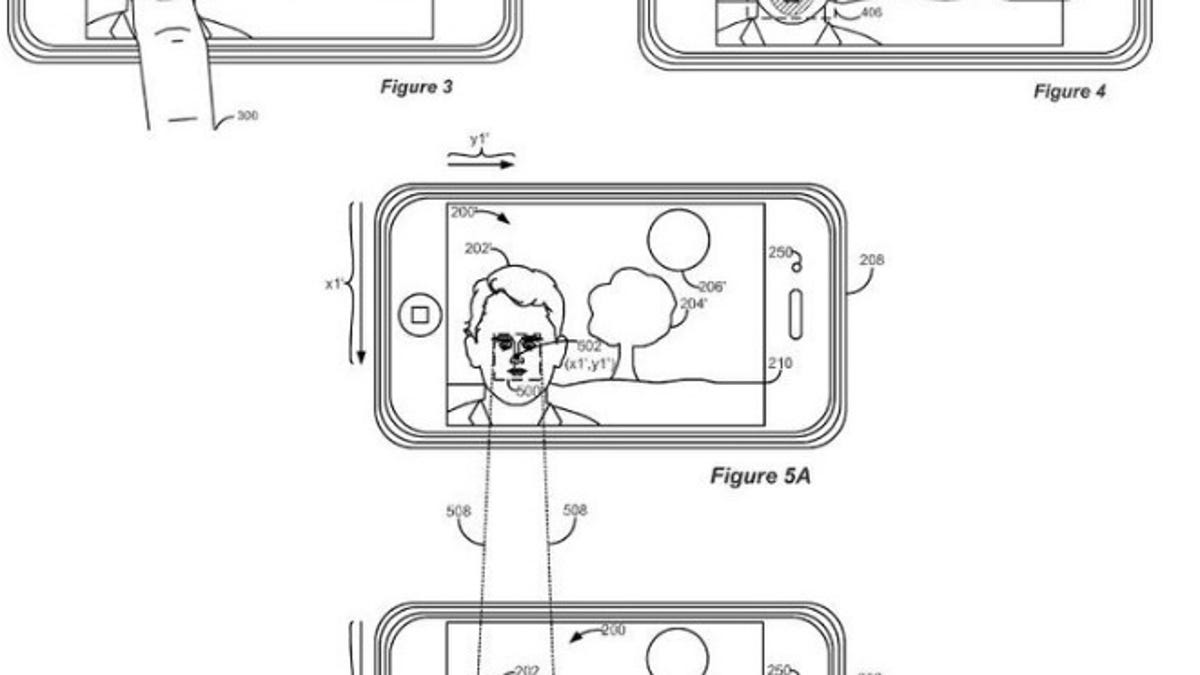Apple seeks patents for camera gesture techniques
Recent applications also point to dramatically improved techniques for preventing and removing red eye in images.

Apple has filed a handful of patent applications that suggest future iterations of the iPhone and iPad will have dramatically improved camera features.
The seven patent filings -- filed on Thursday and first discovered by Patently Apple -- describe gesture techniques and technology for preventing red eye in images.
The abstract for patent application No. 20120242852 outlines mapping user interactions to input the parameters for various image filters, as well as applying "location-based distortions" to image processing.
The accompanying illustrations show how a user would interact with the camera via touch gesture, as well as a light tunnel filter that is based on a user's tap and a filter that Apple refers to as a "shrink filter."
Another application -- No. 20120242849 -- describes a technique for assisted image capture, in which the camera would display a stabilized image to determine whether it's well composed. A second image may replace the original image if it's substantially similar to the stabilized image.
Apple also wants to help users of its devices conquer red eye, the appearance of glowing red pupils caused by a camera's flash. Patent applications 20120243783, 20120243780, 20120242861, 20120242681, and 20120242675 describe various techniques for red-eye removal using multiple recognition channels. Once the red-eye artifact has been identified, the techniques replace the artifact with a "photographically reasonable result" based on the type of red eye occurring.

